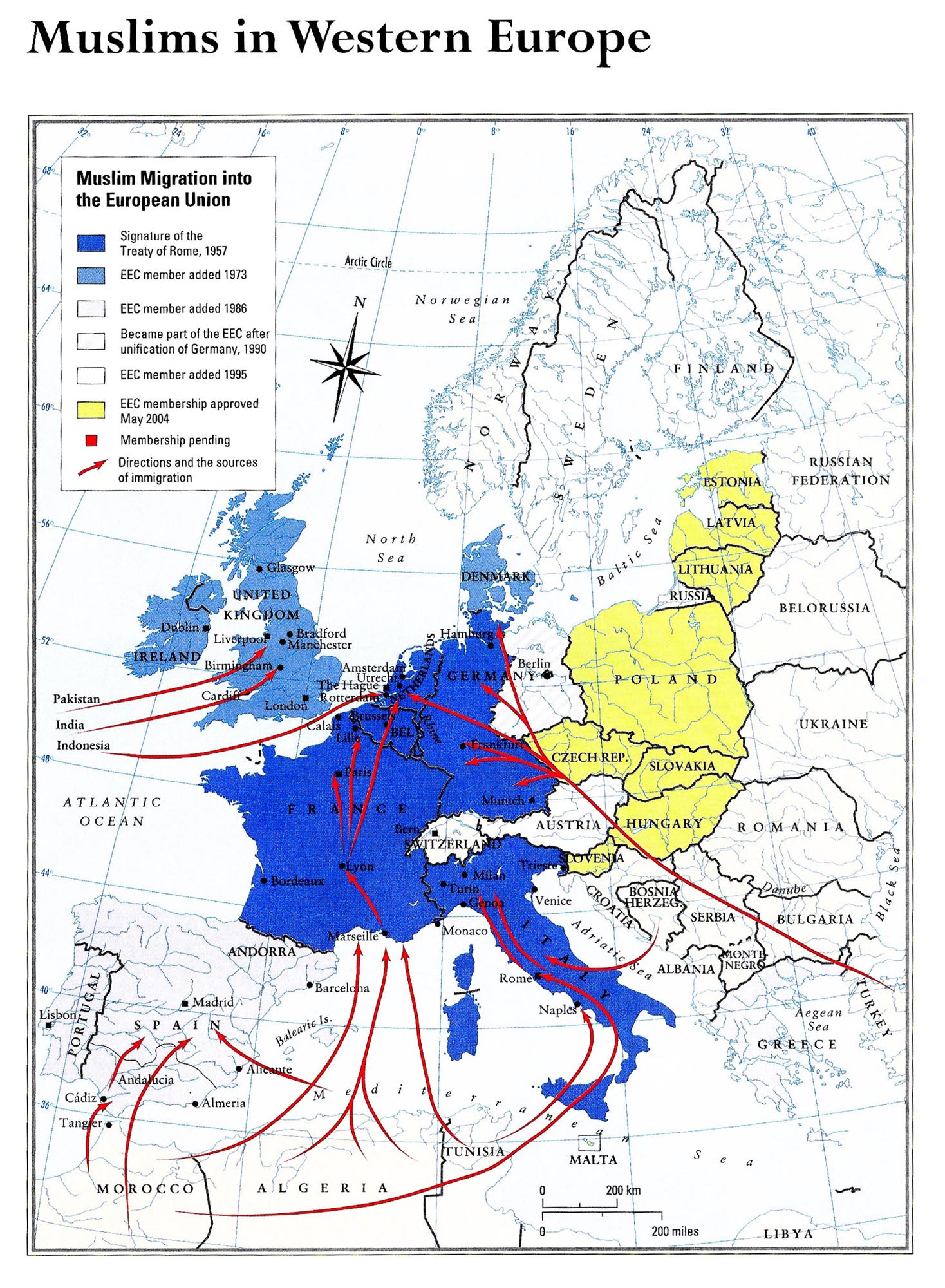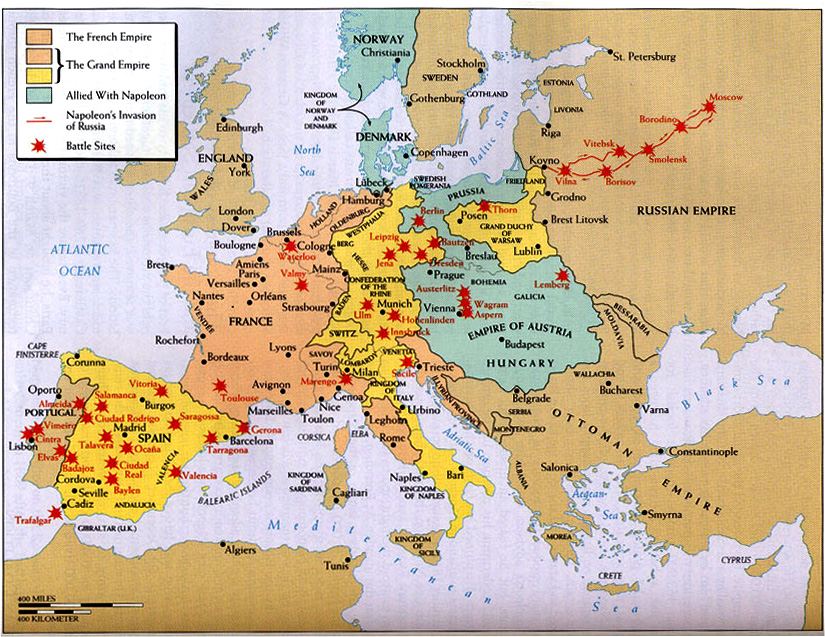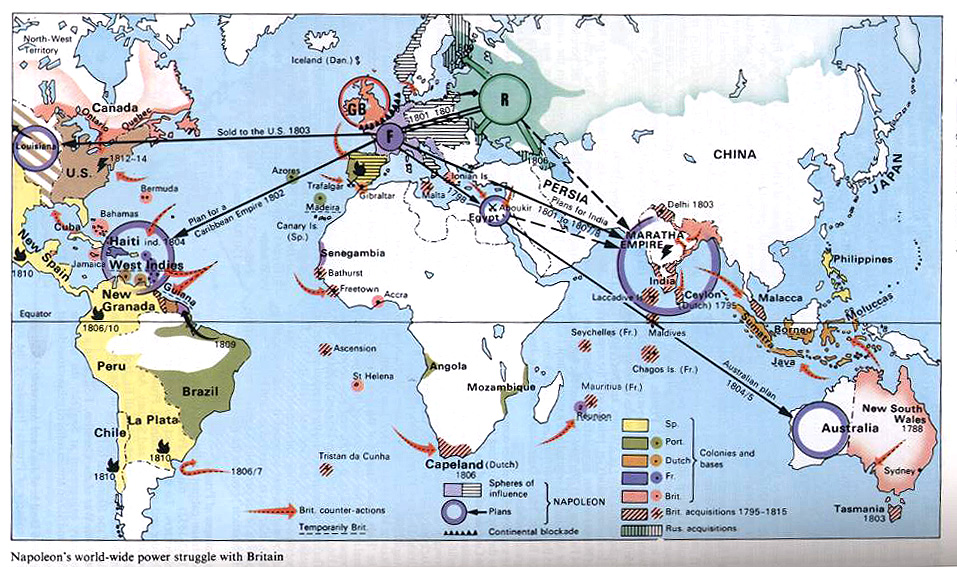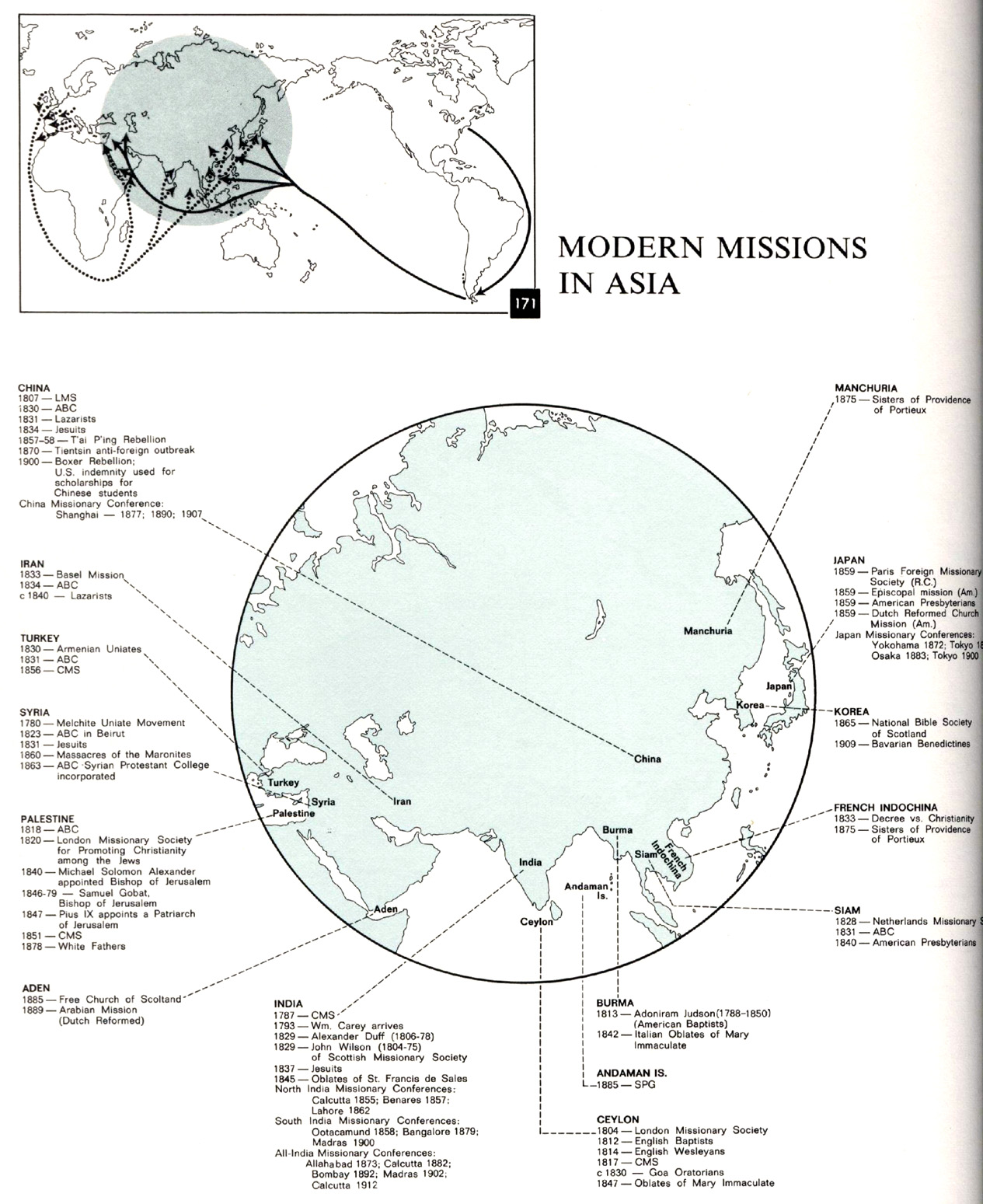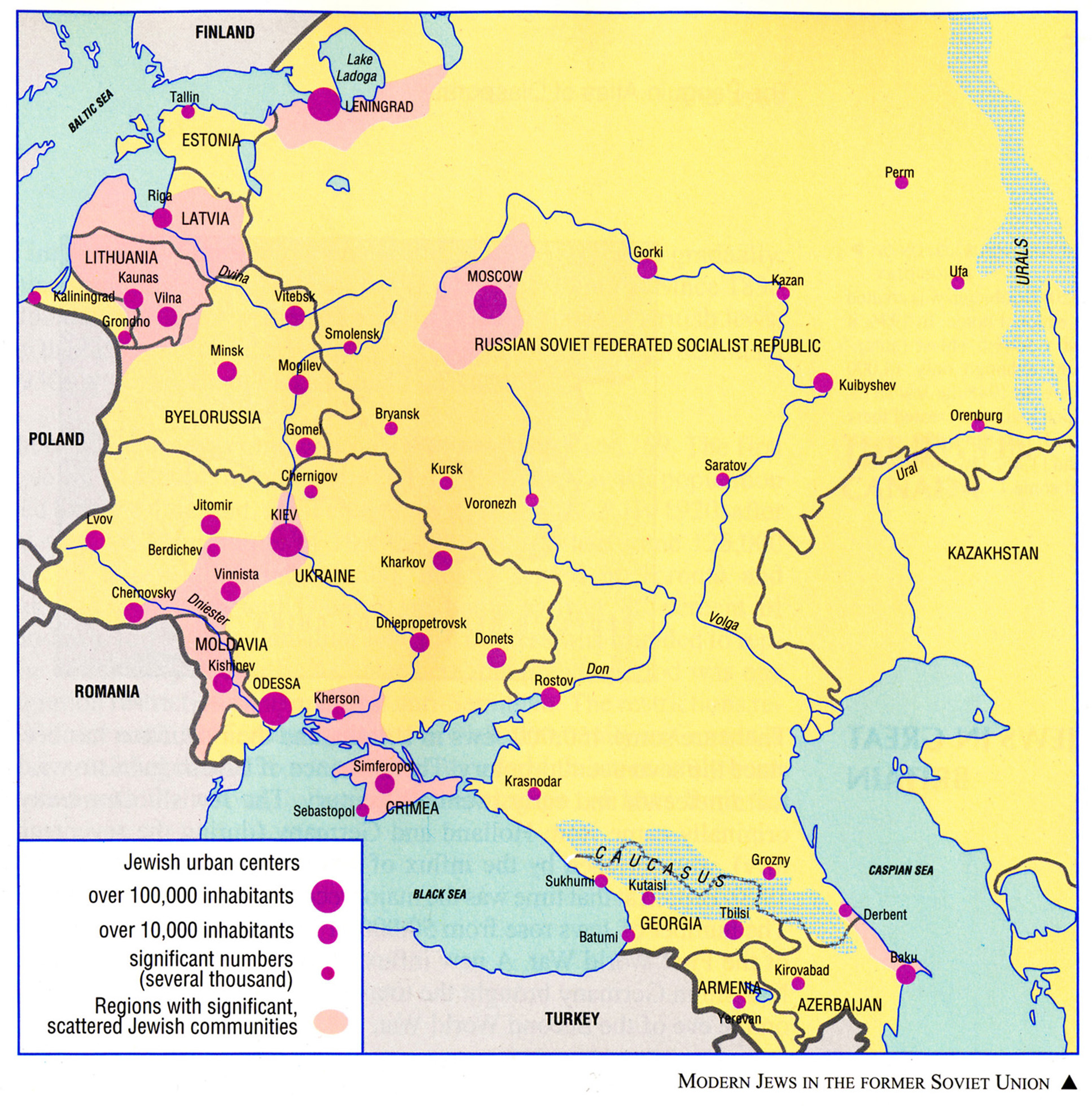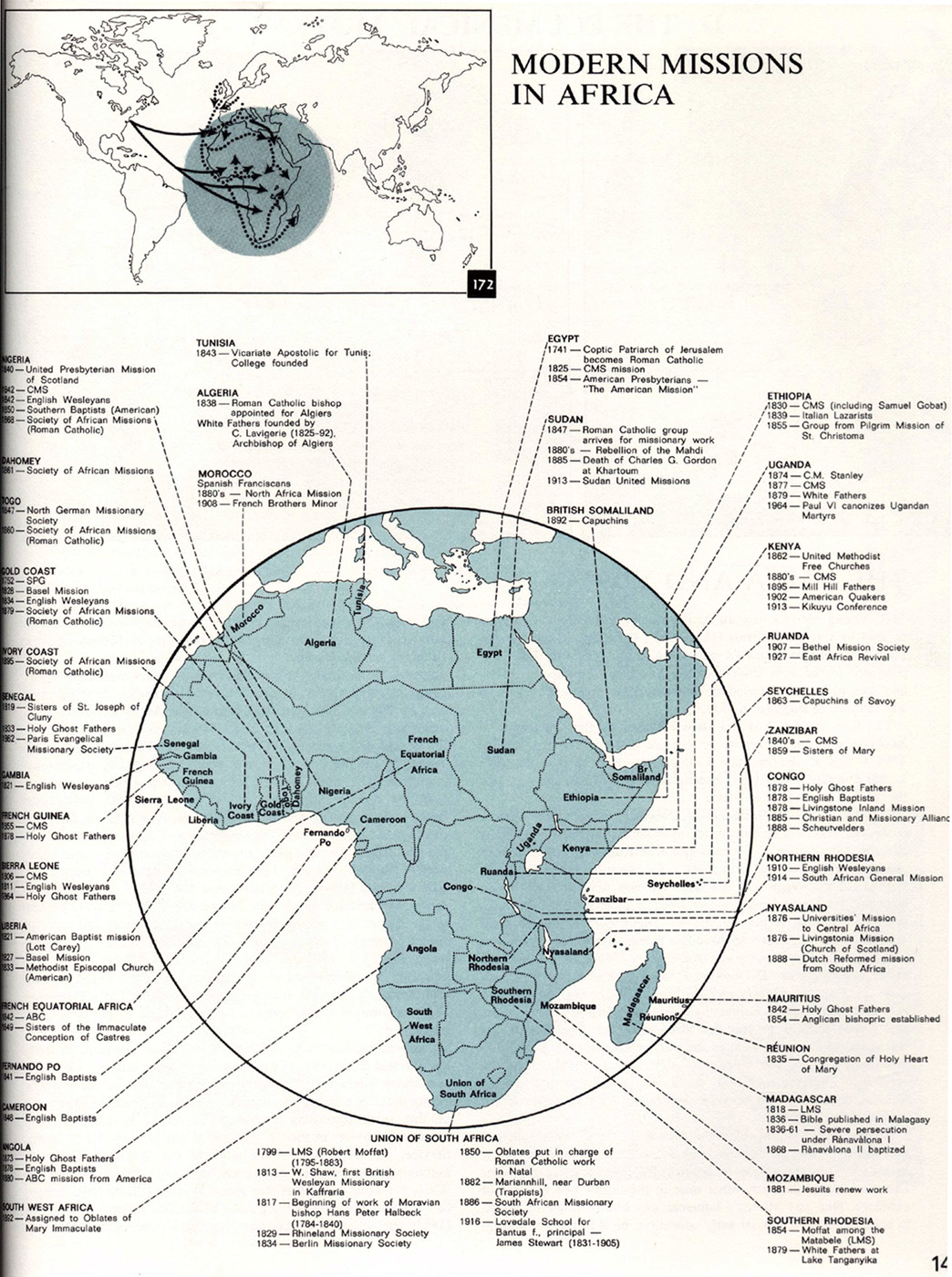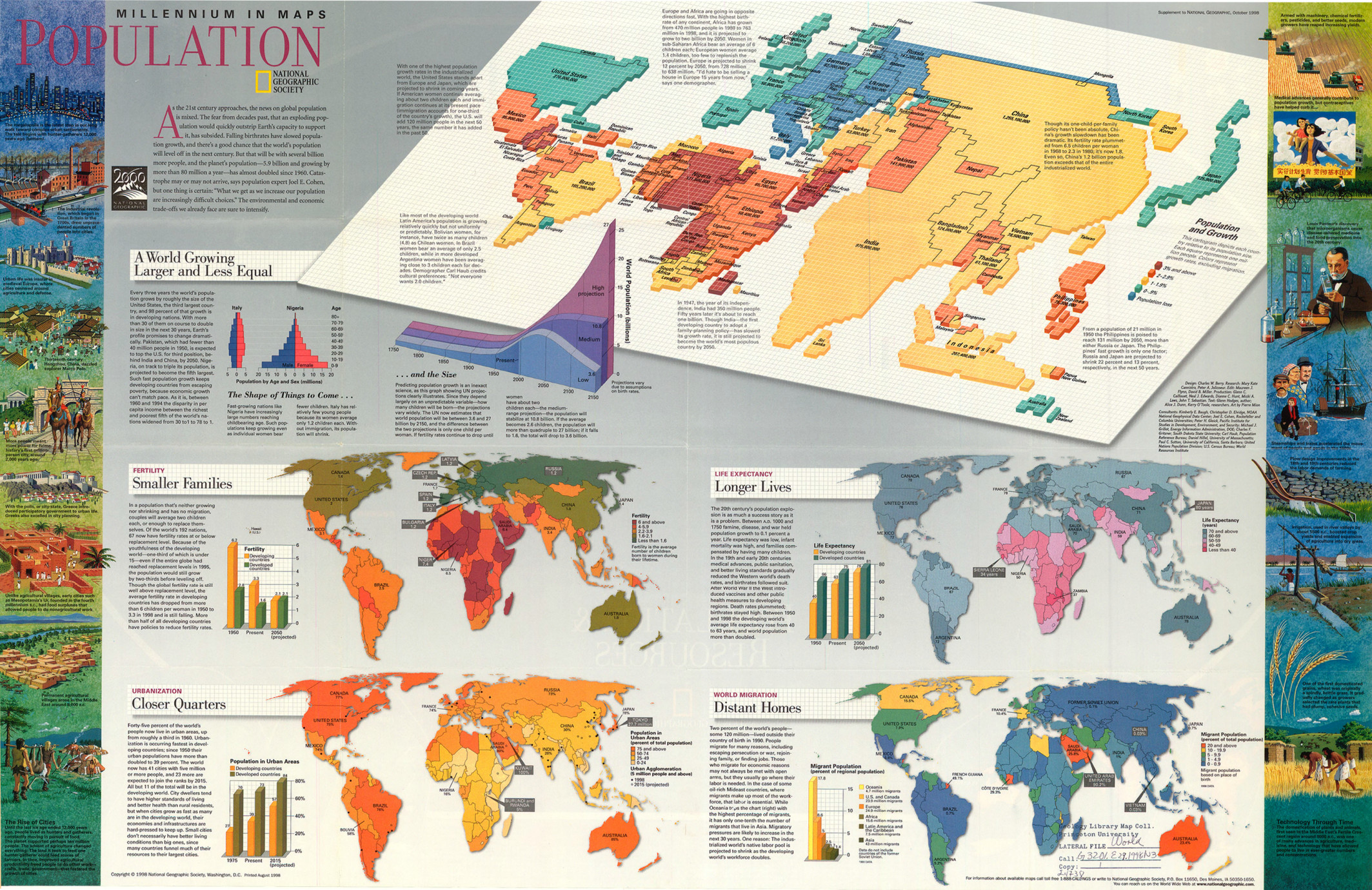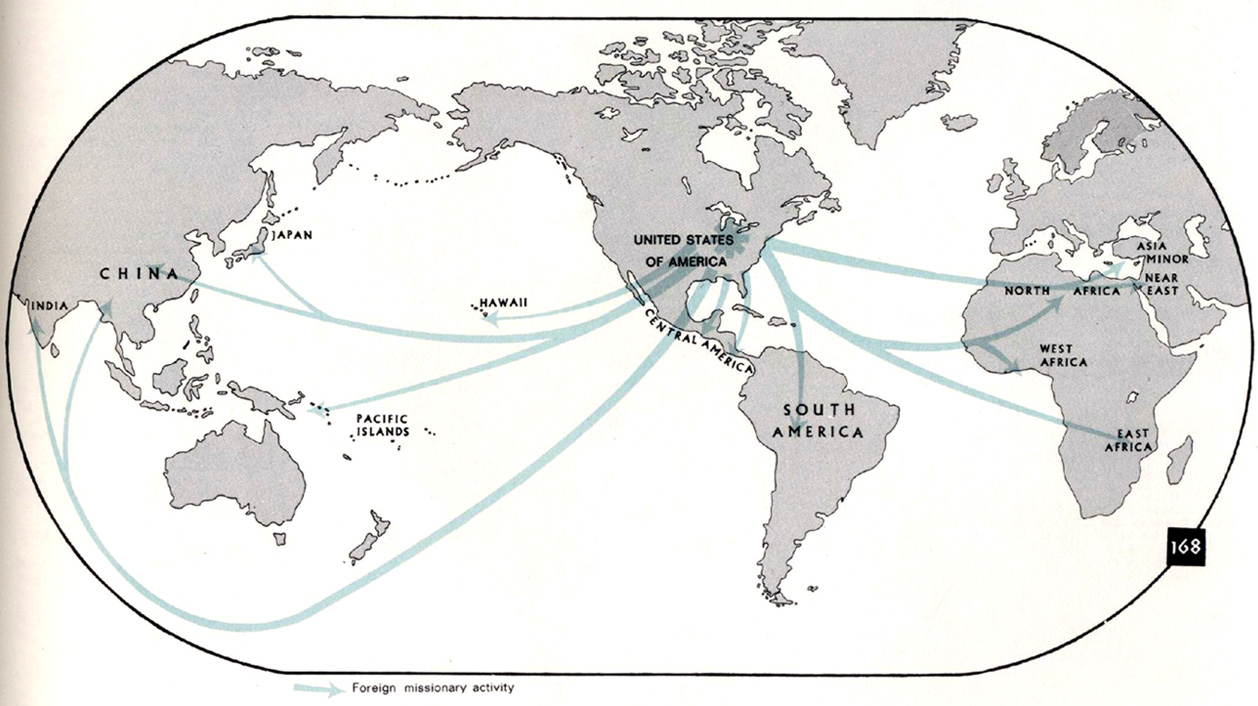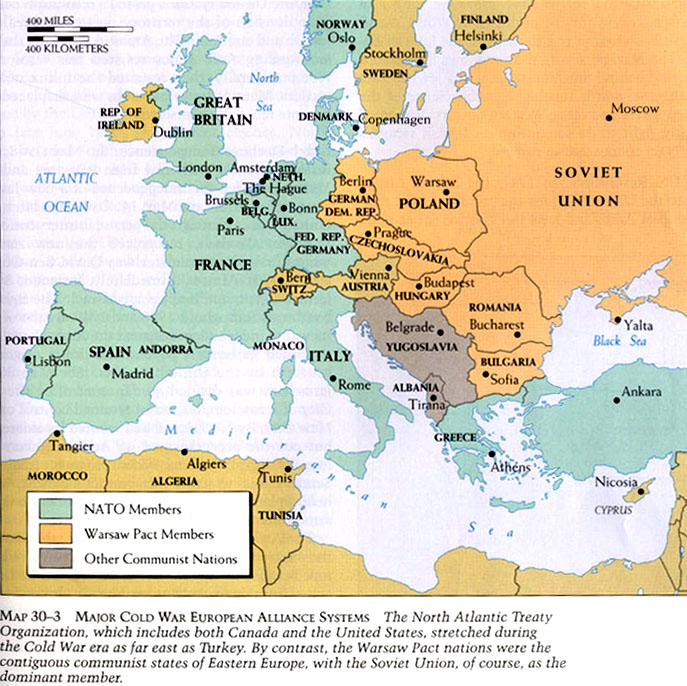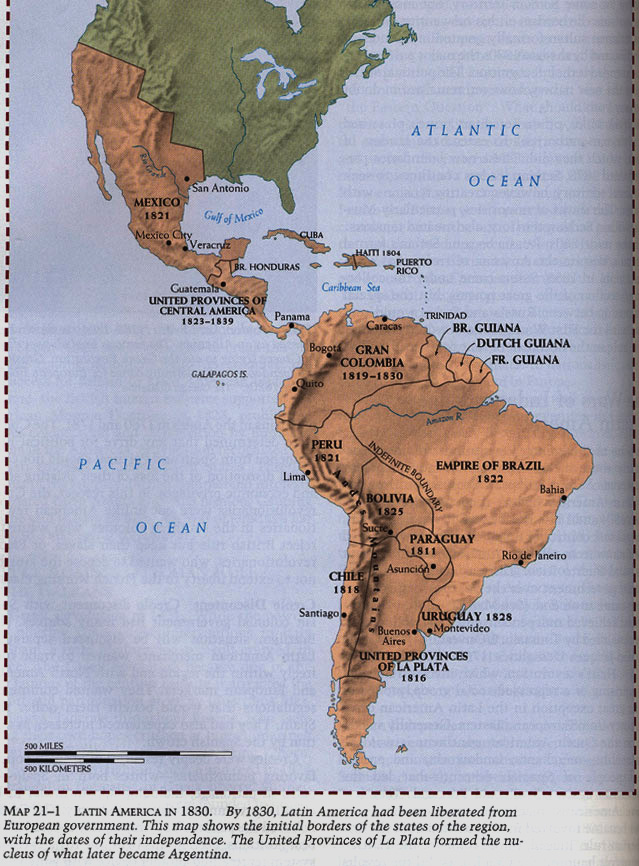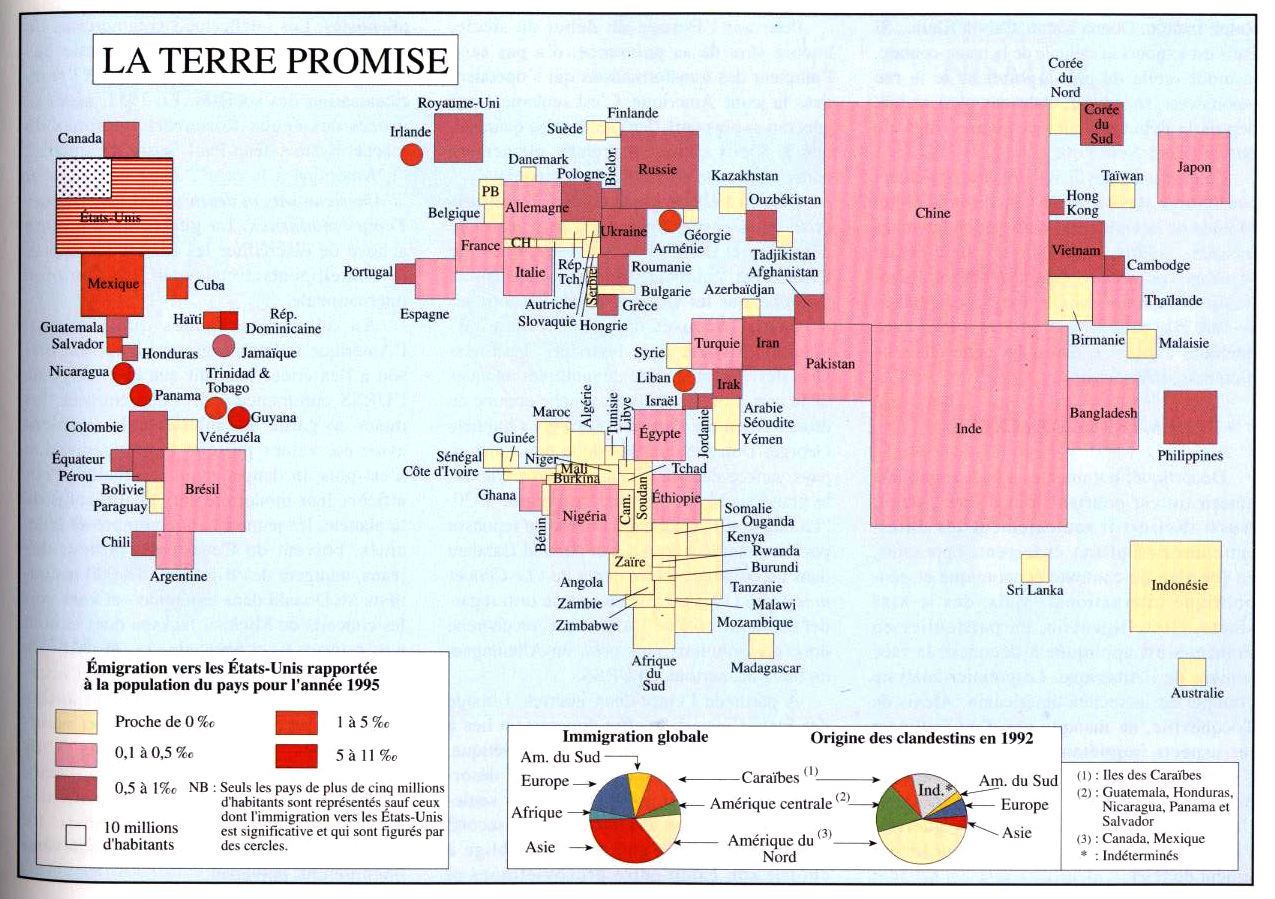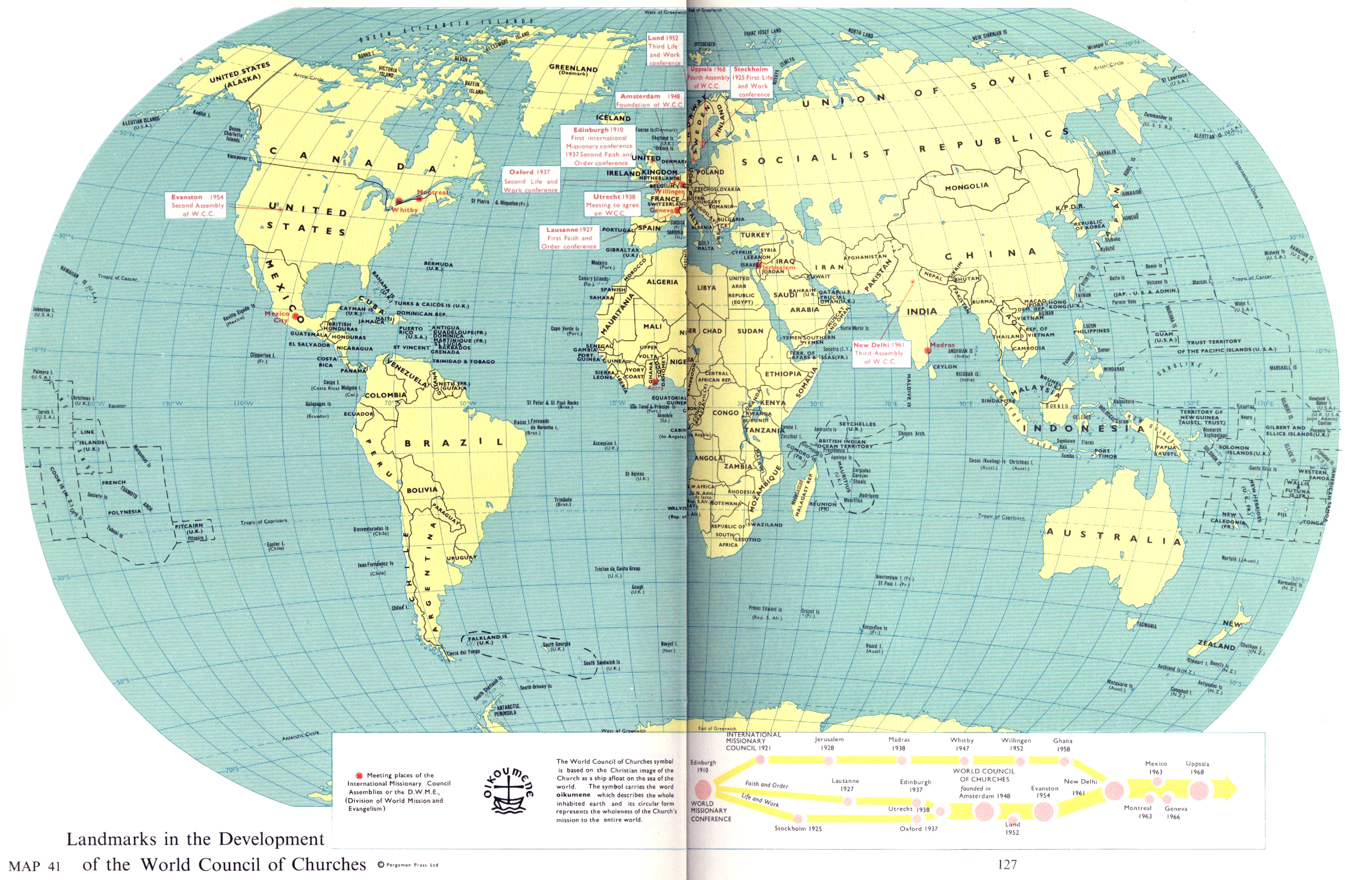Caption
Millennium in Maps – Cultures, 1999
Summary
This poster includes two globes
and several world maps illustrating the expansion of globalization from the 1960s
until its publication in 1999.
The globes show the growth in airline traffic, telephone calls, and the number of telephone sets per continent.
The inset maps depict various statistics by country:
- Coca-Cola consumption
- Toyota vehicles sold, 1998
- Theater admissions to Star Wars, 1997
- Circulation of National Geographic magazine
- Number of Nestle factories
The poster also includes:
- Essays on the following topics:
- The 1960s: Birth of the Global Village
- A more urban world: The Ascent of Cities
- 2000: Globalization Realized?: A Small World After All
- A sidebar on architecture
- Special sections:
- Architecture Crosses Cultures
- Telecommunications in Orbit
- The Spread of the Internet
- Movable Feasts – the story of rice, corn, wheat, soybeans, and potatoes
Legends:
- Airline traffic (annual passenger traffic between cities)
- Telephone calls (millions of minutes per year between countries)
- Number of television sets per continent
- Number of Internet Hosts, 1998 (in millions)
- Urban Population Growth, 1950-2000
- Population growth for largest cities in 2015 (population shown for 1960, 2000, 2015)
A timeline provides a historical perspective on culture and globalization from about
30,000 years ago:
- Ice Age
- Ancient World
- Rise of Agriculture
- Classical Age
- Middle Ages
- Renaissance
- Age of Discovery
- Industrial Revolution
- Information Age
Source
Produced by National Geographic Maps for National Geographic Magazine, Washington, D.C., February 1999.
This map is in the collection of copyrighted maps of the Geosciences and Map Library, Fine Hall (B level), Princeton University.
Call number: G3201.P9.1999.N3
Copyright
© 1999 National Geographic Society, Washington D.C. All rights reserved.
Series
This map is one in a series:

